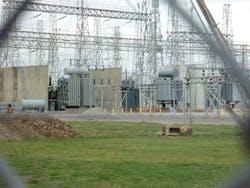New Guidance for 'Smart Grid' Device Manufacturers
The term Smart Grid is many things to many people. While it is difficult to know how the grid will look in 10-20 years time, most people agree in describing it for the moment as the combination of innovative products and services with intelligent monitoring, control communication and self-healing technologies for better, more efficient, cost effective and customer focused delivery of electric energy. Some have even gone to the extent of likening the grid to a tremendous machine and the Smart Grid to be the greatest upgrade of any machine; but as with any upgrade, everything must work together. If not, the risk and safety implications are tremendous.
“The Smart Grid continues to evolve and remains a hard thing to define; the same holds true for the functional safety requirements relating to it,” says Thomas Maier, principal engineer, functional safety, at Underwriters Laboratories (UL). The only requirements to this point related to functional safety are that the manufacturers of any type of device must make their devices so that they can be part of the Smart Grid; that is, they can interact with Smart Grid components they have never interacted with before.
“In fact, the only requirement for the manufacturer is that they need to have a risk management process in place,” says Maier. “They need to be able to look beyond their products to the expected application of their products in a Smart Grid context. Additionally, they need to derive or foresee functions of their products that could be important to the safety of other participants in this market or functions that would open up the product—make the product accessible—for other parts of the Smart Grid. They also need to look at how this might override protective functions at Smart Grid interactions that would start up or shut down the device when it is not supposed to start up or shut down.”
The idea at this point is that any Smart Grid-enabled product needs to be aware of this new context, a larger system than it may have been in the past. To that end, every manufacturer should do hazard identification and risk analysis with that mindset. “Then they will find out if functions are provided in their device that may become relevant to safety because it is part of the Smart Grid,” says Maier. If such functions are identified, then a functional safety evaluation in a Smart Grid context will be needed.
The Development of UL Subject 2744,
Safety of Products in Smart Environments
UL Subject 2744 (UL Subj. 2744) is a draft standard developed to be used by device and appliance manufacturers, such as meter manufacturers, that want their devices to be enabled for or compatible with the Smart Grid. (Smart Grid enabled and Smart Grid compatible are two different classifications, depending on how strongly a device can interact with the Smart Grid.)
UL Subj. 2744 requires that product be designed within a risk management system to address safety throughout the product lifecycle. It provides conditions for setting standards when looking at functional safety after manufacturers have done hazard identification and risk assessment in the Smart Grid context.
The scope of UL Subj. 2744 requirements apply to:
• Products intended to receive and react to communication data in the smart environment, also known as smart-enabled products • Products identified as being compatible with communication environments associated with (a), or those that are not smart-enabled, but compatible with smart-enabled products • Products intended to interact with communication data and control products that do not otherwise react to communication data“We’re looking at the evolution of ‘systems of systems,’” says Anura Fernando, research engineer, predictive modeling and risk analysis at UL. “As these systems become more complex, emergent properties of the overall system will have safety implications.” When considering these systems of systems, one may be looking at individual products such as appliances—historically typical devices—or at new types of alternative energy generating systems, such as wind turbines and PV arrays that have been developed only recently. “We may be seeing more safety equipment specifically developed to deal with managing the Smart Grid,” continues Fernando, “so we need the flexibility that UL Subj. 2744 inherently includes because the Smart Grid evolution has infinite possibilities.”
The key is to make sure that there are risk management processes in place so that, as manufacturers take these steps into the Smart Grid, they exercise due caution, address the risks, and bring them out into the open so that they can be addressed under existing requirements or new safety requirements that are developed. Subject 2744 helps assure this process in the current environment.
“The development of Subject 2744 is another example of UL taking a leadership role in technology relating to safety, even as those technologies are just emerging and the issues aren’t fully known,” says Maier. “UL explores those issues as they evolve and builds safety requirements around them.”
UL is evaluating all end-product standards that could be used in the Smart Grid environment. If an end product’s normal safety requirements suffice, then 2744 would not be invoked. If those normal requirements do not suffice, then 2744 can be applied.

